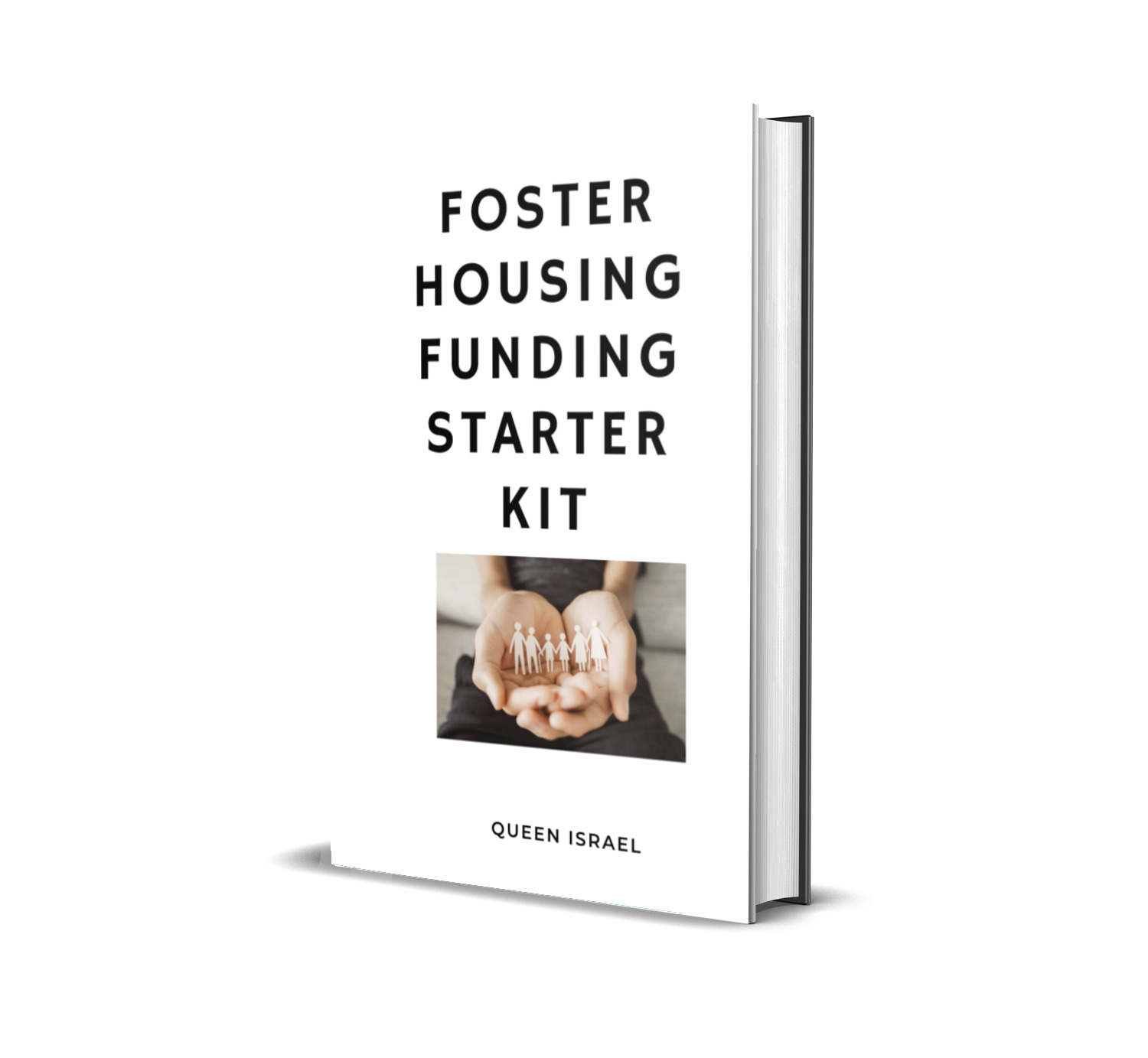When it comes to home renovations, many of us dream of upgrading our living spaces but worry about the cost. If you’re looking to enhance the comfort, safety, and efficiency of your home, federal home improvement grants might be the solution you’ve been waiting for.
Whether it’s adding energy-efficient windows, improving accessibility, or making your home more environmentally friendly, federal grants can help you achieve your goals without straining your wallet.
In this comprehensive guide, we’ll break down everything you need to know about federal home improvement grants, how to apply, and the resources available to support your home renovation journey. Let’s dive into it!
What Are Federal Home Improvement Grants?
Federal home improvement grants are funds provided by government agencies to assist homeowners with home renovations, repairs, or energy-saving upgrades.
These grants are typically offered to help homeowners make improvements that enhance the livability, accessibility, and energy efficiency of their homes, especially if they are low-income or elderly individuals, or if they live in underserved communities.
Unlike loans, grants don’t need to be repaid, making them a highly sought-after source of funding for home improvements.
Federal home improvement grants can cover a wide variety of projects, from fixing structural damage to installing energy-efficient appliances. The government offers these grants to encourage improvements that benefit both the homeowner and the community at large.
Why Should You Consider Federal Home Improvement Grants?
Exploring federal home improvement grants can open doors to numerous benefits that go beyond just financial assistance. Here are some compelling reasons to consider applying for these grants:
- Financial Assistance: Grants are free money that doesn’t need to be paid back, unlike loans that accrue interest. This means you can undertake significant home improvements without adding to your debt burden.
- Energy Savings: Many federal grants focus on helping homeowners make their homes more energy-efficient. This could mean long-term savings on utility bills and less environmental impact, contributing to a greener planet.
- Increased Home Value: Home improvements often increase the overall value of your property, which can be beneficial if you plan to sell it in the future. Enhancements like updated kitchens, bathrooms, or energy-efficient systems are particularly attractive to potential buyers.
- Accessibility Enhancements: Federal grants often fund modifications to make homes more accessible, helping people with disabilities or elderly homeowners stay safe and comfortable in their homes. Features like ramps, widened doorways, and accessible bathrooms can significantly improve quality of life.
- Safety and Security: Upgrading your home with modern safety features like smoke detectors, security systems, and sturdy roofing can protect your family and reduce the risk of accidents or damage from natural disasters.
- Community Improvement: By improving your home, you also contribute to the overall betterment of your neighborhood. Well-maintained homes can lead to increased property values and a stronger sense of community pride.
Types of Federal Home Improvement Grants Available
Several different types of federal home improvement grants are available, each targeting different needs and populations.
Understanding the variety of grants can help you identify which ones you might qualify for and how they can benefit your specific situation. Here are some of the most popular federal home improvement grants:
1. The Weatherization Assistance Program (WAP)
One of the most popular federal home improvement grants is the Weatherization Assistance Program (WAP), which aims to help low-income families make their homes more energy-efficient. This program provides funds to install energy-saving measures, such as:
- Insulation: Improving your home’s insulation can significantly reduce heating and cooling costs by maintaining a consistent indoor temperature.
- Energy-efficient windows and doors: Replacing old windows and doors with energy-efficient models can prevent heat loss and reduce energy consumption.
- Weatherstripping: Sealing gaps around windows and doors helps to keep out drafts, enhancing comfort and lowering energy bills.
- Heating and cooling upgrades: Upgrading to modern, energy-efficient heating and cooling systems can lead to substantial energy savings.
- Energy-efficient lighting: Installing LED lighting and other energy-efficient lighting solutions can reduce electricity usage and costs.
According to the U.S. Department of Energy, WAP has helped millions of families save money on their energy bills and reduced the overall energy consumption in homes across the country. In 2023 alone, the program allocated over $3 billion in grants, impacting more than 1 million homes nationwide.
2. The U.S. Department of Housing and Urban Development (HUD) Grants
HUD offers a variety of grants to improve homes in low-income communities. These grants are designed to support community development and ensure that all Americans have access to safe and affordable housing. Key HUD grant programs include:
- HUD Community Development Block Grant (CDBG): This program provides communities with resources to address a wide range of community development needs, including home renovations. If your home is in a neighborhood that meets HUD’s eligibility criteria, you might qualify for CDBG funds to repair or upgrade your home.
- Section 504 Home Repair Program: This program offers both grants and loans to low-income homeowners to repair, improve, or modernize their homes. The program is particularly focused on assisting elderly homeowners and those with disabilities. Common repairs covered include fixing structural issues, replacing heating systems, and making homes more accessible.
- HOME Investment Partnerships Program: This program provides grants to states and localities to fund affordable housing projects. While primarily focused on the construction of affordable housing, some funds can be used for home improvement projects within existing affordable housing units.
HUD’s grants are instrumental in revitalizing distressed neighborhoods, promoting economic development, and ensuring that all individuals have access to safe and healthy living conditions.
3. Veterans Affairs (VA) Grants for Home Improvements
Veterans who have served in the military may qualify for home improvement grants through the Veterans Affairs (VA) department. These grants are designed to make homes safer and more accessible for veterans with disabilities. Key VA grants include:
- Specially Adapted Housing (SAH) Grant: This grant assists veterans with certain service-connected disabilities to buy, build, or modify a home to meet their unique needs. Examples of modifications include wheelchair ramps, widened doorways, and accessible bathrooms.
- Special Housing Adaptation (SHA) Grant: Similar to the SAH grant, the SHA grant helps veterans adapt their existing homes to accommodate disabilities. This can include installing elevators, modifying kitchens, or creating accessible outdoor spaces.
- Veterans Housing Improvement Loan (VHIL): While not a grant, the VHIL provides low-interest loans to veterans for home improvements. This can be an additional resource for veterans looking to make extensive modifications to their homes.
These VA grants recognize the sacrifices veterans have made and aim to provide them with the support needed to live comfortably and safely in their homes.
4. The Low-Income Home Energy Assistance Program (LIHEAP)
While primarily focused on helping low-income households pay their energy bills, LIHEAP also offers assistance for home energy efficiency improvements. This can include weatherization services and the installation of energy-efficient appliances, helping to reduce long-term energy costs for eligible homeowners.
5. Federal Emergency Management Agency (FEMA) Grants
In the wake of natural disasters, FEMA provides grants to help homeowners repair or rebuild their homes. These grants are essential for restoring homes damaged by events such as hurricanes, floods, earthquakes, and wildfires.
FEMA’s Hazard Mitigation Grant Program (HMGP), for example, offers funds to reduce the risk of future disasters by implementing measures like elevating homes, reinforcing structures, and installing flood barriers.
How to Apply for Federal Home Improvement Grants
Applying for federal home improvement grants is a process that requires attention to detail and patience, but don’t worry—we’ve got you covered! Here are the general steps to follow when applying for these grants:
Step 1: Research Available Grants
Start by researching the various federal home improvement grants that may apply to your situation. Some grants are targeted toward specific groups of people, such as veterans, low-income families, or seniors.
Others focus on specific types of home improvements, like energy efficiency or accessibility upgrades. Use resources such as the Grants.gov website to explore available options.
Additionally, visiting the official websites of the U.S. Department of Housing and Urban Development (HUD), the Department of Energy (DOE), and the Veterans Affairs (VA) can provide detailed information on specific grant programs.
Step 2: Check Eligibility Criteria
Each grant program has specific eligibility requirements. These might include income limits, age restrictions, location-based criteria, or specific needs related to your home. For example:
- WAP: Typically requires that your household income is at or below 200% of the federal poverty level.
- HUD CDBG: Eligibility is often based on the location of your home and the economic conditions of your community.
- VA SAH/SHA Grants: Must be a veteran with a service-connected disability.
- LIHEAP: Based on income and energy costs relative to income.
Review the eligibility criteria for each grant program to ensure that you meet the necessary qualifications before investing time in the application process.
Step 3: Gather Necessary Documentation
Before you apply, gather all the necessary documentation that the grant program may require. This could include:
- Proof of Income: Recent pay stubs, tax returns, or other income documentation.
- Identification: Government-issued ID, Social Security numbers, or veteran documentation if applicable.
- Home Ownership Proof: Deeds, mortgage statements, or property tax bills.
- Detailed Project Plans: Descriptions of the home improvements you intend to make, including cost estimates and timelines.
- Photos of Your Home: Some programs may require before-and-after photos or images highlighting areas that need improvement.
- Medical Documentation: For accessibility grants, documentation from a healthcare provider may be necessary to demonstrate the need for specific modifications.
Having all your documents organized and readily available can streamline the application process and increase your chances of approval.
Step 4: Submit Your Application
Once you have all your documents ready, you can submit your application. Some grants require you to apply online through Grants.gov, while others may have specific instructions on where to submit your application. Follow these steps to ensure a smooth submission:
- Create an Account on Grants.gov: If applying through Grants.gov, you’ll need to create an account and complete the necessary registrations.
- Fill Out the Application Form: Provide all required information accurately and thoroughly. Incomplete or incorrect applications can lead to delays or denials.
- Attach Required Documents: Upload all necessary supporting documents as specified by the grant program.
- Review Before Submission: Double-check all information and attachments to ensure everything is complete and accurate.
- Submit Before the Deadline: Make sure to submit your application before the grant’s deadline to be considered for funding.
Step 5: Wait for Approval
Once your application is submitted, it will undergo review by the grant-awarding agency. The approval process can take several weeks or even months, depending on the program and the volume of applications. During this time:
- Stay Patient: Grant reviews can be time-consuming, especially for highly competitive programs.
- Monitor Your Application Status: Some platforms, like Grants.gov, allow you to track the status of your application online.
- Respond to Requests for Additional Information: Be prepared to provide any additional documentation or clarification if requested by the reviewing agency.
If you’re awarded a grant, you’ll receive instructions on how to use the funds for your home improvement project. Make sure to follow these instructions carefully to remain in compliance with grant terms and conditions.
Tips for a Successful Application
Maximizing your chances of securing a federal home improvement grant involves careful preparation and attention to detail. Here are some tips to help you craft a successful application:
- Follow Instructions: Each grant program has its own specific instructions, so it’s essential to read and follow them carefully. Pay close attention to formatting requirements, word limits, and required documentation.
- Provide Accurate Information: Ensure all the information you provide in your application is accurate and complete. Mistakes or omissions could lead to delays or denial of your grant.
- Be Clear About Your Needs: When describing the home improvements you plan to make, be as clear and specific as possible. Use detailed descriptions and, if possible, include cost estimates and timelines to demonstrate the feasibility of your project.
- Highlight the Impact: Explain how the improvements will benefit you, your family, and the broader community. For example, emphasize energy savings, increased safety, or enhanced accessibility.
- Include Supporting Documentation: Provide all required supporting documents, such as photos, medical records, or financial statements, to strengthen your application.
- Seek Professional Assistance: If you’re unsure about any aspect of the application, consider seeking help from a grant writing professional or attending a workshop through the Grant Writing Academy to enhance your application skills.
Common Challenges and How to Overcome Them
While federal home improvement grants can be a lifesaver, the application process can be competitive and challenging. Here are some common challenges homeowners face and tips on how to overcome them:
1. Limited Availability of Funds
Federal grants can run out of funds quickly, especially in high-demand programs like the Weatherization Assistance Program. To overcome this challenge:
- Apply Early: Submit your application as soon as the grant window opens to increase your chances of securing funding.
- Stay Informed: Keep track of grant deadlines and availability by regularly checking official websites and subscribing to relevant newsletters.
- Explore Multiple Grants: Don’t rely on a single grant program. Apply to multiple grants to maximize your chances of receiving funding.
2. Strict Eligibility Requirements
Some grants have strict eligibility requirements based on income, location, or home condition. If you don’t qualify for a certain grant, don’t give up! Here’s what you can do:
- Research Thoroughly: Understand the specific criteria for each grant and identify alternative programs that you may be eligible for.
- Seek Assistance: Contact local housing authorities or nonprofit organizations that can help you navigate eligibility requirements and identify suitable grants.
- Improve Eligibility: In some cases, taking steps to improve your eligibility, such as increasing energy efficiency measures or making minor home repairs, can make you eligible for more grants.
3. Delays in the Approval Process
Waiting for grant approval can be stressful and may delay your home improvement plans. To manage this challenge:
- Plan Ahead: Start the application process well in advance of when you need the funds.
- Explore Interim Solutions: While waiting for grant approval, consider exploring other financial assistance options, such as local home improvement loans, credit unions, or community-based programs.
- Stay Patient and Persistent: Understand that the approval process can take time and remain patient while your application is being reviewed.
4. Incomplete or Poorly Written Applications
An incomplete or poorly written application can lead to rejection. To ensure your application stands out:
- Double-Check Everything: Review your application thoroughly to ensure all sections are complete and all required documents are attached.
- Use Clear and Concise Language: Write clearly and concisely, avoiding jargon or overly complex language. Make your application easy to understand.
- Seek Feedback: Have someone else review your application to catch any errors or provide constructive feedback before submission.
Federal Home Improvement Grants Success Stories
Hearing about others who have successfully navigated the grant application process can be inspiring and provide valuable insights. Here are a few success stories:
a) John’s Energy-Efficient Makeover
John, a single father living in a low-income neighborhood, applied for the Weatherization Assistance Program (WAP) to improve his home’s energy efficiency. With the grant, John was able to install new insulation and energy-efficient windows. As a result, his monthly energy bills decreased by 30%, and his home became much more comfortable during the winter months. John’s success story highlights how federal grants can make a significant financial and quality-of-life impact.
b) Maria’s Accessible Home Transformation
Maria, a retired veteran with mobility issues, utilized the VA Specially Adapted Housing (SAH) Grant to modify her home. The grant funded the installation of a wheelchair ramp, widened doorways, and an accessible bathroom. These changes allowed Maria to live independently and safely in her home, enhancing her overall well-being and independence.
c) The Lee Family’s Community Upgrade
The Lee family, living in a deteriorating neighborhood, received a HUD Community Development Block Grant (CDBG) to renovate their home. They repaired structural damages, updated their kitchen, and added a new roof. These improvements not only improved the Lee family’s living conditions but also contributed to the revitalization of their entire community, demonstrating the broader impact of federal home improvement grants.
Federal Home Improvement Grants Resources
To successfully navigate the world of federal home improvement grants, having access to the right resources is crucial. Here are some essential resources to help you find and apply for grants:
- Grants.gov: This is the go-to website for discovering federal grant opportunities. It provides a comprehensive database of available grants, application instructions, and deadlines.
- Department of Energy – Weatherization Assistance Program: Learn more about energy-saving home improvement grants, including eligibility criteria and application processes.
- HUD Grants: Find out about the various home repair and community development grants from the U.S. Department of Housing and Urban Development.
- VA Home Loans & Grants: Explore home improvement grants specifically designed for veterans, including the Specially Adapted Housing (SAH) Grant and the Special Housing Adaptation (SHA) Grant.
- Federal Emergency Management Agency (FEMA): Access grants for disaster recovery and home improvements to mitigate future risks.
- Local Housing Authorities: Your local housing authority can provide information on state-specific grants and programs that may be available to you.
- Grant Writing Academy: Enhance your grant application skills with expert tips, strategies, templates, and tools designed to improve your success rates.
Frequently Asked Questions (FAQs)
1. Who is eligible for federal home improvement grants?
Eligibility varies by program, but common criteria include income level, homeownership status, age (often seniors), disability status, and the specific needs of the home. It’s essential to review the eligibility requirements of each grant program you’re interested in.
2. How much money can I receive from a federal home improvement grant?
The amount varies widely depending on the grant program and the scope of the project. Some grants may cover a few thousand dollars, while others can provide funding for extensive renovations costing tens of thousands of dollars.
3. Can I apply for multiple grants at the same time?
Yes, you can apply for multiple grants simultaneously as long as you meet the eligibility criteria for each program. However, be mindful of any restrictions that may prevent you from receiving multiple grants for the same project.
4. How long does it take to receive grant funds?
The timeline can vary significantly depending on the grant program and the volume of applications. It can take anywhere from a few weeks to several months from application submission to receiving funds.
5. Do I need to repay federal home improvement grants?
No, grants are considered gift funds and do not need to be repaid, provided you comply with the grant’s terms and conditions.
6. Can I use grant funds for any home improvement project?
Grant funds are typically earmarked for specific types of improvements, such as energy efficiency, accessibility, or safety enhancements. It’s important to ensure your planned project aligns with the grant’s objectives.
7. What if my grant application is denied?
If your application is denied, you can review the feedback provided, address any issues, and reapply in future grant cycles. Additionally, you can explore other grant opportunities or alternative funding sources.
Conclusion
Federal home improvement grants are a fantastic way to upgrade your home without incurring debt. Whether you’re looking to improve energy efficiency, make your home more accessible, or address urgent repairs, these grants offer an opportunity to achieve your home improvement goals. Remember to research the available options, meet eligibility requirements, and provide a complete application to boost your chances of success.
To stay informed and increase your chances of winning grants, subscribe to the Grant Writing Academy Newsletter. By subscribing, you’ll get access to tips, strategies, templates, and tools that will help you not only apply for federal home improvement grants but also enhance your success rate across all your grant applications.
Subscribe to the Grant Writing Academy Newsletter Today!
With the right guidance and resources, you can unlock the funding needed to transform your home into the dream space you’ve always wanted. Don’t let financial barriers hold you back—explore federal home improvement grants and take the first step toward a better, more comfortable home today!
The Impact of Federal Home Improvement Grants on Communities
Beyond individual benefits, federal home improvement grants play a crucial role in community development and economic growth. Here’s how these grants positively impact neighborhoods and cities:
a) Economic Stimulus
Home improvement projects funded by grants create jobs for local contractors, suppliers, and laborers. This economic activity stimulates the local economy and supports small businesses within the community.
b) Neighborhood Revitalization
Well-maintained homes contribute to the overall aesthetic and structural integrity of neighborhoods. This can lead to increased property values, reduced vacancy rates, and a stronger sense of community pride.
c) Environmental Benefits
Energy-efficient home improvements reduce overall energy consumption, leading to lower greenhouse gas emissions and a smaller carbon footprint. These environmental benefits contribute to broader sustainability goals and help combat climate change.
d) Social Stability
By providing low-income and vulnerable populations with the means to improve their living conditions, federal home improvement grants promote social stability and reduce disparities in housing quality.
How to Stay Updated on Grant Opportunities
Staying informed about the latest grant opportunities is essential for maximizing your chances of securing funding. Here are some ways to stay updated:
- Subscribe to Newsletters: Sign up for newsletters from government agencies like HUD, DOE, and VA, as well as nonprofit organizations that focus on housing and community development.
- Follow Social Media Channels: Many grant programs and agencies use social media to announce new grants and provide updates. Follow their official accounts on platforms like Twitter, Facebook, and LinkedIn.
- Join Relevant Forums and Groups: Online forums, professional groups, and community organizations can be valuable sources of information and support. Engage with these communities to learn about new opportunities and share experiences.
- Attend Workshops and Webinars: Participate in workshops, webinars, and seminars focused on grant writing and home improvement grants. These events often provide insider tips and updates on the latest grant programs.
- Consult with Local Housing Authorities: Your local housing authority can provide information on state-specific grants and programs that may not be widely advertised.
Leveraging the Grant Writing Academy for Success
Navigating the complex world of federal home improvement grants can be daunting, but the Grant Writing Academy is here to help. By subscribing to their newsletter, you gain access to a wealth of resources designed to enhance your grant application skills and increase your success rates. Here’s what you can expect:
- Expert Tips and Strategies: Learn the best practices for writing compelling grant proposals that stand out to reviewers.
- Templates and Tools: Access customizable templates for various sections of your grant application, including project descriptions, budgets, and timelines.
- Case Studies and Success Stories: Gain insights from others who have successfully secured grants, and apply their strategies to your own applications.
- Latest Grant Updates: Stay informed about new grant opportunities, changes in eligibility criteria, and other important updates.
- Interactive Workshops and Webinars: Participate in live sessions with grant writing experts who can provide personalized advice and answer your questions.
Join the Grant Writing Academy Newsletter Now!
Final Thoughts
Federal home improvement grants offer a valuable opportunity to enhance your home’s functionality, safety, and efficiency without the burden of repayment. By understanding the types of grants available, navigating the application process effectively, and leveraging available resources, you can secure the funding needed to transform your living space.
Remember, the key to a successful grant application lies in thorough research, careful preparation, and clear, compelling presentation of your project’s benefits. Whether you’re a veteran, a low-income homeowner, or someone looking to make energy-efficient upgrades, there’s likely a grant program that can help you achieve your home improvement goals.
Don’t let financial constraints hold you back from creating the home you’ve always wanted. Explore the various federal home improvement grants available, follow the steps outlined in this guide, and utilize the resources provided by the Grant Writing Academy to maximize your chances of success.
Subscribe Now and Unlock Your Home Improvement Potential!
With determination and the right support, you can navigate the grant application process and secure the funding needed to make meaningful improvements to your home. Start your journey today and turn your home improvement dreams into reality!
Additional Resources and Support
a) Expand Your Knowledge
The grant writing field is always evolving. Keep learning and improving your skills to stay competitive.
Recommended Resources:
- Request for Proposal Success: How to Write Proposals That Win: Learn the techniques and strategies to create standout proposals.
- Tech Startup Funding Secrets: Navigating Grants for Maximum Growth: Perfect for those in the tech sector looking to leverage grants for scaling.
- Grant Proposal Guide for Environmental Projects: Tailored for environmental initiatives seeking to secure impactful funding.
- The Ultimate Guide to Federal Grant Applications: Techniques for Success: Master the complexities of federal grants with actionable insights.
Explore More Books Here
b) Invest in Expert Guidance
Join one of our mentorship programs for tailored advice and support:
Mentorship Programs:
- 3-Month Mentorship: The Foundation Builder: A short-term plan to refine your grant writing skills and win your first (or next) grant.
- 6-Month Mentorship: The Proposal Pro: Dive deeper into strategies, proposal reviews, and funding plans.
- 1-Year Mentorship: The Funding Champion: Build long-term success with comprehensive guidance, unlimited reviews, and exclusive resources.
C) Book a One-on-One Consultation
Sometimes you just need personalized advice to tackle challenges or fine-tune your strategy. Let’s work together to solve your unique grant writing challenges.






